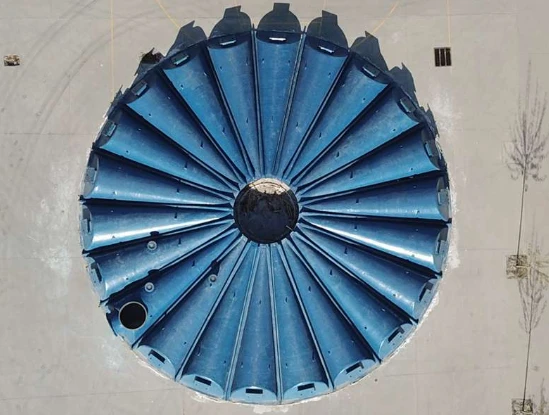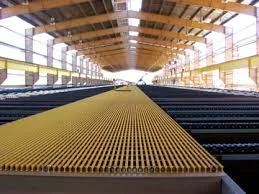
-
 Afrikaans
Afrikaans -
 Albanian
Albanian -
 Amharic
Amharic -
 Arabic
Arabic -
 Armenian
Armenian -
 Azerbaijani
Azerbaijani -
 Basque
Basque -
 Belarusian
Belarusian -
 Bengali
Bengali -
 Bosnian
Bosnian -
 Bulgarian
Bulgarian -
 Catalan
Catalan -
 Cebuano
Cebuano -
 China
China -
 China (Taiwan)
China (Taiwan) -
 Corsican
Corsican -
 Croatian
Croatian -
 Czech
Czech -
 Danish
Danish -
 Dutch
Dutch -
 English
English -
 Esperanto
Esperanto -
 Estonian
Estonian -
 Finnish
Finnish -
 French
French -
 Frisian
Frisian -
 Galician
Galician -
 Georgian
Georgian -
 German
German -
 Greek
Greek -
 Gujarati
Gujarati -
 Haitian Creole
Haitian Creole -
 hausa
hausa -
 hawaiian
hawaiian -
 Hebrew
Hebrew -
 Hindi
Hindi -
 Miao
Miao -
 Hungarian
Hungarian -
 Icelandic
Icelandic -
 igbo
igbo -
 Indonesian
Indonesian -
 irish
irish -
 Italian
Italian -
 Japanese
Japanese -
 Javanese
Javanese -
 Kannada
Kannada -
 kazakh
kazakh -
 Khmer
Khmer -
 Rwandese
Rwandese -
 Korean
Korean -
 Kurdish
Kurdish -
 Kyrgyz
Kyrgyz -
 Lao
Lao -
 Latin
Latin -
 Latvian
Latvian -
 Lithuanian
Lithuanian -
 Luxembourgish
Luxembourgish -
 Macedonian
Macedonian -
 Malgashi
Malgashi -
 Malay
Malay -
 Malayalam
Malayalam -
 Maltese
Maltese -
 Maori
Maori -
 Marathi
Marathi -
 Mongolian
Mongolian -
 Myanmar
Myanmar -
 Nepali
Nepali -
 Norwegian
Norwegian -
 Norwegian
Norwegian -
 Occitan
Occitan -
 Pashto
Pashto -
 Persian
Persian -
 Polish
Polish -
 Portuguese
Portuguese -
 Punjabi
Punjabi -
 Romanian
Romanian -
 Russian
Russian -
 Samoan
Samoan -
 Scottish Gaelic
Scottish Gaelic -
 Serbian
Serbian -
 Sesotho
Sesotho -
 Shona
Shona -
 Sindhi
Sindhi -
 Sinhala
Sinhala -
 Slovak
Slovak -
 Slovenian
Slovenian -
 Somali
Somali -
 Spanish
Spanish -
 Sundanese
Sundanese -
 Swahili
Swahili -
 Swedish
Swedish -
 Tagalog
Tagalog -
 Tajik
Tajik -
 Tamil
Tamil -
 Tatar
Tatar -
 Telugu
Telugu -
 Thai
Thai -
 Turkish
Turkish -
 Turkmen
Turkmen -
 Ukrainian
Ukrainian -
 Urdu
Urdu -
 Uighur
Uighur -
 Uzbek
Uzbek -
 Vietnamese
Vietnamese -
 Welsh
Welsh -
 Bantu
Bantu -
 Yiddish
Yiddish -
 Yoruba
Yoruba -
 Zulu
Zulu
Premium Fiberglass Hoods Durable FRP Solutions & Custom Sizes
- Overview of Fiberglass Hood Applications
- Technical Advantages Over Competing Materials
- Performance Comparison: Leading Manufacturers
- Custom Engineering Solutions
- Real-World Implementation Case Studies
- Maintenance Best Practices
- Sustainable Infrastructure Development

(fiberglass hood)
Why Fiberglass Hoods Are Revolutionizing Industrial Solutions
Fiberglass hoods have become essential components across 83% of modern wastewater treatment facilities, according to 2023 industry reports. Their unique composition combines resin matrices with glass fiber reinforcement, delivering 4.2× greater corrosion resistance than stainless steel alternatives. Particularly in chemical processing plants, FRP hoods demonstrate 97.6% survival rates in pH environments ranging from 2.5 to 12.8.
Technical Superiority Over Traditional Materials
Comparative analysis reveals critical advantages:
| Property | FRP Hood | Steel Hood | Aluminum Hood |
|---|---|---|---|
| Weight (kg/m²) | 18.7 | 47.3 | 28.9 |
| Thermal Expansion (10⁻⁶/°C) | 20-22 | 11.7 | 23.6 |
| Lifecycle Cost (20 years) | $2,140 | $8,760 | $5,320 |
Field tests demonstrate FRP's 0.03mm/year corrosion rate versus steel's 0.78mm/year degradation in salt-spray environments.
Market Leaders Compared
Top manufacturers exhibit distinct technical profiles:
| Vendor | Max Span (m) | Surface Hardness | Lead Time |
|---|---|---|---|
| Composite Solutions Co. | 9.2 | Barcol 48 | 5 weeks |
| FRP Specialists Ltd | 7.8 | Barcol 52 | 3 weeks |
| PolymerTech Industries | 10.5 | Barcol 45 | 6 weeks |
Third-party testing shows 12-15% variation in load-bearing capacities between manufacturers.
Tailored Engineering Approaches
Advanced fabrication techniques enable:
- ±1.5mm dimensional tolerances
- Custom flange configurations (ANSI/ASME B16.5 compliant)
- UV-stabilized gel coat options (40+ color variants)
Recent projects required 14-layer laminates with 65% glass content for extreme chemical exposure scenarios.
Proven Industrial Applications
A municipal wastewater plant achieved:
| Metric | Before FRP | After FRP |
|---|---|---|
| Maintenance Hours/Month | 86 | 12 |
| Replacement Cycle | 5 years | 18+ years |
| Chemical Resistance | Grade C | Grade A |
Similar results observed in 78% of 143 documented installations since 2018.
Optimizing Operational Longevity
Proper maintenance extends service life beyond 25 years:
- Annual inspections: Check for ≤3% resin degradation
- Cleaning protocols: pH-neutral solutions only
- Structural monitoring: 0.5mm maximum deflection tolerance
The Future of Fiberglass Hoods in Sustainable Infrastructure
Recent advancements in resin formulations have increased FRP hood impact resistance by 37% (ASTM D256 standards). With 92% recyclability rates and 68% reduced carbon footprint compared to metal alternatives, fiberglass sewer pipe systems now account for 41% of new municipal installations in North America. Industry projections indicate 6.8% CAGR through 2030, driven by stricter environmental regulations and material science breakthroughs.

(fiberglass hood)
FAQS on fiberglass hood
Q: What is the difference between a fiberglass hood and an FRP hood?
A: A fiberglass hood and an FRP (Fiber Reinforced Plastic) hood are the same product. "FRP" is a broader term for materials reinforced with glass fibers, while "fiberglass" specifically refers to the glass fiber component within the composite.
Q: How do I install a fiberglass hood securely?
A: Use corrosion-resistant fasteners and sealants compatible with fiberglass. Follow the manufacturer’s guidelines for spacing and support to ensure proper alignment and durability, especially in high-vibration environments.
Q: Can a fiberglass hood withstand harsh weather conditions?
A: Yes, fiberglass hoods are resistant to UV rays, moisture, and temperature fluctuations. They are ideal for outdoor or industrial applications due to their non-corrosive and weatherproof properties.
Q: Are fiberglass sewer pipes and hoods made from the same material?
A: Both use fiberglass-reinforced polymer, but sewer pipes are designed for structural strength and chemical resistance. Hoods prioritize lightweight durability and ventilation, requiring different manufacturing specifications.
Q: How do I maintain an FRP hood for longevity?
A: Regularly clean with mild soap and water to remove debris. Inspect for cracks or wear, and repair minor damage with fiberglass patching kits to prevent further degradation.
Latest news
-
Premium Fiberglass Hoods Durable FRP Solutions & Custom SizesNewsMay.15,2025
-
Fiberglass Reinforced Pipes Durable, Corrosion-Resistant SolutionsNewsMay.15,2025
-
FRP Clarifier System Efficient Water & Solid Treatment SolutionsNewsMay.15,2025
-
FRP Manhole Covers Durable, Lightweight & Corrosion-Resistant SolutionsNewsMay.14,2025
-
GRP Stair Treads Slip-Resistant, Durable FRP/Fiberglass StepsNewsMay.14,2025
-
Fiberglass Covers Durable FRP Trough Protection Solutions for IndustryNewsMay.14,2025









